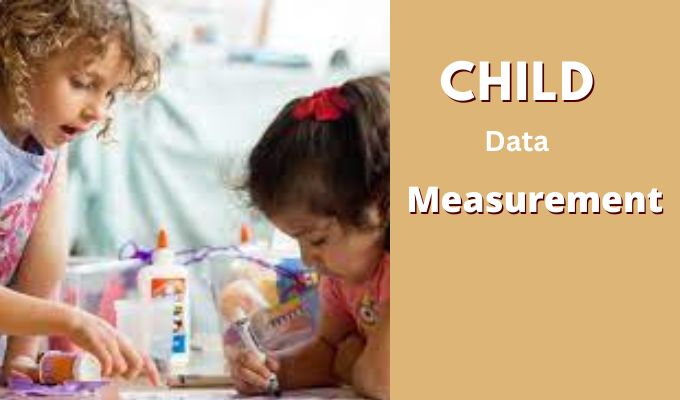Embarking on the fascinating journey of parenthood involves more than just counting tiny fingers and toes. Imagine being equipped with a powerful tool that unveils the intricate story of your child’s growth – that’s the magic of ” Child Data Measurement.” In this digital age, we decode the secret language hidden in your child’s development metrics. From those adorable first steps to the blossoming milestones, data becomes the storyteller, revealing patterns and insights. Join us in demystifying the numeric dance of childhood, where every giggle and growth spurt finds its place in the captivating narrative of “Measuring Child Growth Through Data.”

Introduction:
Embark on a journey through the evolving landscape of parenting as we explore the realm of ” Child Data Measurement.” In this guide, we delve into the profound insights data offers in understanding your child’s development.
Understanding Growth Metrics:
Uncover the science behind growth metrics, decoding the significance of weight, height, and developmental milestones in your child’s journey from infancy to adolescence.
Importance of Accurate Measurement:
Discover why precision in measuring child growth is paramount, shaping not only health assessments but also providing early indications of potential issues.
The MECE Framework in Child Growth Analysis:
Explore the Mutually Exclusive, Collectively Exhaustive (MECE) framework, a systematic approach that ensures a holistic and structured analysis of your child’s growth data.
Key Metrics for Comprehensive Assessment:
Dive into the essential metrics – from BMI to developmental milestones – that form a comprehensive assessment toolkit for understanding your child’s growth patterns.
Addressing Ethical and Privacy Concerns:
Navigate the ethical and privacy considerations surrounding child growth data, ensuring responsible use and protection of sensitive information.
Future Trends in Child Growth Measurement:
Peer into the future of child growth measurement, exploring technological advancements and innovative approaches that promise to revolutionize how w

e track and understand development.
Measuring Socioeconomic Impact:
Examine how child growth data extends beyond individual well-being, shedding light on the broader socioeconomic impact of investing in early childhood development.
Conclusion:
As we conclude our exploration, grasp the transformative power of ” Child Data Measurement.” Empowered with knowledge, parents can navigate the intricate journey of parenthood, fostering a foundation for a healthy and thriving future generation.

FAQS:
Q1:How do you measure a child’s growth?
Height (Length): Measure the child’s height while they are standing upright against a wall or using a stadiometer.
Weight: Use a calibrated scale to measure the child’s weight. It is essential to consider age and gender when interpreting weight measurements.
Q2:How do you monitor a child’s growth?
Regular Check-ups: Schedule regular health check-ups to monitor growth trends over time.
Growth Charts: Plotting height and weight measurements on growth charts helps visualize and track a child’s growth compared to age and gender norms.
Q3:What are the anthropometric data for children?
Height (Length): Measure in centimeters or inches.
Weight: Measure in kilograms or pounds.
Head Circumference: Measure around the largest part of the head, usually above the eyebrows and ears.
Body Mass Index (BMI): Calculated using weight and height measurements, providing an indication of body fat.
Mid Upper Arm Circumference (MUAC): Measure the circumference of the upper arm to assess nutritional status.
Q4:What are 5 anthropometric measurements?
-
- Height (Length)
- Weight
- Head Circumference
- Body Mass Index (BMI)
- Mid Upper Arm Circumference (MUAC)
These anthropometric measurements collectively offer a comprehensive view of a child’s growth and development, aiding in the identification of potential health or nutritional concerns. Regular monitoring and interpretation of these measurements are essential for ensuring a child’s well-being and timely intervention if needed.
